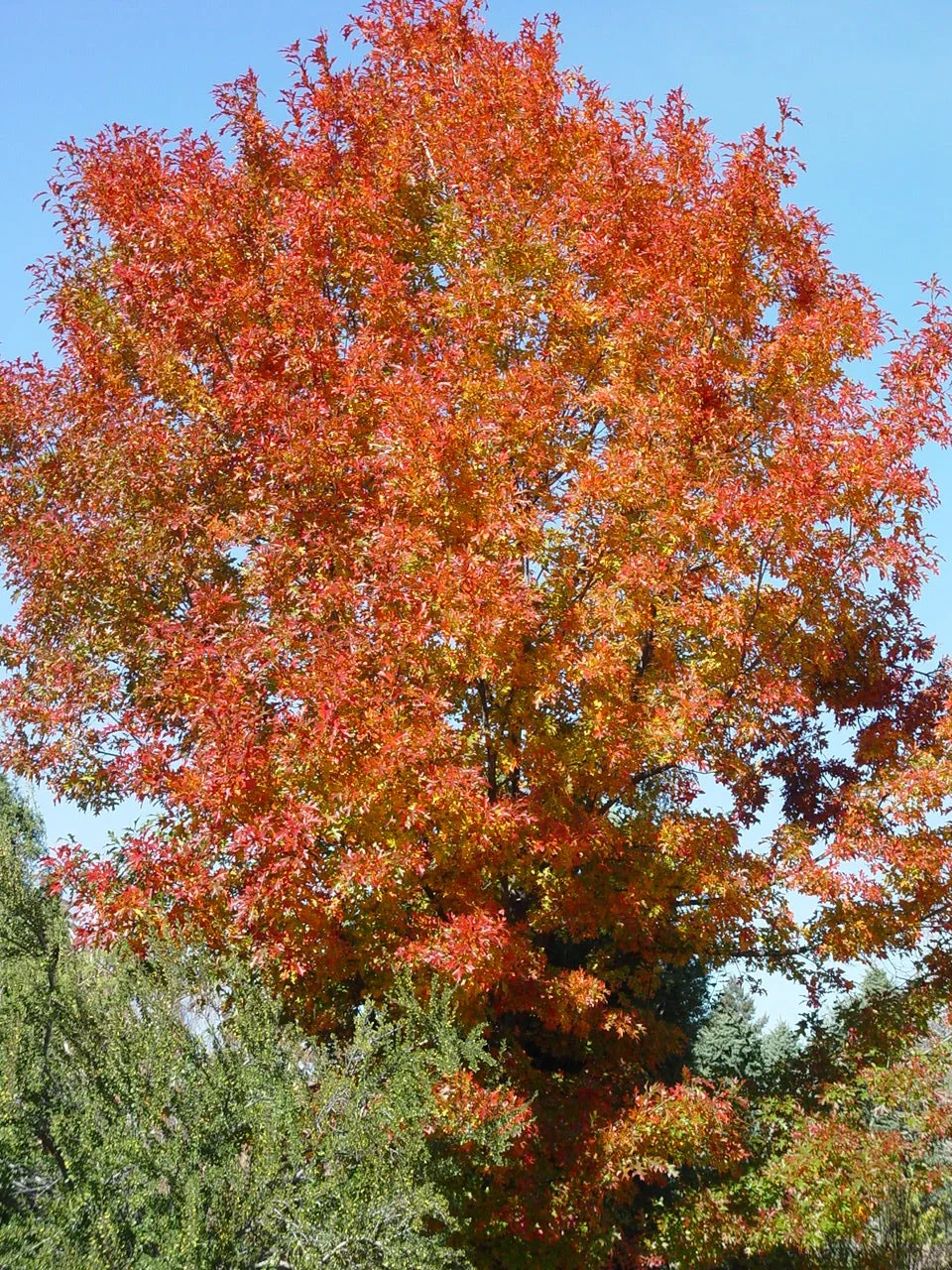Texas red oak (Quercus buckleyii)
First place champion Texas red oak in Denver at Denver Botanic Garden York Street.
Species info:
Leaves: Alternate, elliptical to obovate, 2.4–4.8 inches long and 2–4 inches wide; deeply divided into 5–9 (usually 7) lobes, broadest toward the tip and ending in several bristle-tipped teeth; shiny dark green above, pale green and tufted with hairs in the vein axils below; turn brown or red in fall
Leaflets: N/A (simple leaves)
Leaf Surface: Glossy on top, pale and slightly hairy beneath
Bark: Dark gray, smoothish when young, furrowed into ridges on older trunks and branches
Flowers: Inconspicuous, brown; appear in spring; separate male (catkins) and female flowers occur on the same tree (monoecious)
Fruit:
Botanical: Quercus buckleyii
Family: Fagaceae
Mature Height: Up to 50 feet
Canopy Spread: 30 to 50 feet
Foliage Type: Deciduous
Tree Shape: Small to medium tree with a narrow, upright to spreading form
Flowers: Inconspicuous
Fruit: Edible, but requires preparation
Fall Color: Brown to red
Water Use: Low to moderate; drought tolerant
Hardiness: USDA Zones 6–11
Native Range: Limestone ridges, slopes, and creek bottoms of Texas, Oklahoma, and Kansas
Soil Preference: Tolerates alkaline, neutral, and slightly acidic soils
Wildlife Value: Acorns provide food for birds and mammals
Pests/Pathogens: Resistant to Verticillium; susceptible to caterpillars, borers, aphids, scales, leaf miners, insect galls, Armillaria, anthracnose, canker, leaf spot, powdery mildew, and root rot
Notable Traits: More drought tolerant than Shumard oak but less cold hardy; promising shade tree for Colorado’s Front Range; being tested in urban settings for adaptability
Planting recommendation: Recommended for most sites, but seed sources are not reliably cold hardy
Information Sources:


